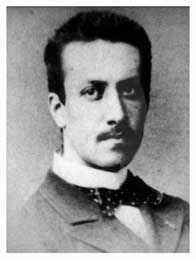| Surrexit a mortuis | |
|---|---|
| Choral music by Charles-Marie Widor | |
 Widor in 1870 Widor in 1870 | |
| English | He rose from the dead |
| Key | C minor |
| Opus | 23/3 |
| Occasion | Easter |
| Composed | 1876 (1876) |
| Published | 1906 (1906) |
| Scoring |
|
Surrexit a mortuis ('He rose from the dead'), Op. 23, No. 3, is a composition for choir and two organs by Charles-Marie Widor. The text is an anonymous Latin Easter hymn. Named a motet, it was first published by Hamelle in 1906. The single work was published by Dr. J. Butz in 2008.
History
Widor composed Surrexit a mortuis around 1876. He was at the time, since January 1870, "provisional" organist of Saint-Sulpice in Paris, which features a main organ and a choir organ, both built by Aristide Cavaillé-Coll.
The composition was originally conceived, with the title Sacerdos et Pontifex (Bishop and pope), for the installation of a new bishop at the Dijon Cathedral, more specifically for a pontifical procession. It was dedicated to R. Moissenet, the master of the Cathedral's choirs. As the event is rare, Widor saved the music for more frequent use by assigning it to an anonymous Easter hymn in Latin, a text that appears nowhere else, and may have been written by the composer.
Widor scored the music for a four-part choir (SATB) and two organs, following a specifically French tradition of using two organs, an orgue de choeur (choir organ) in the churches' choir, and a grand orgue (grand organ) at the opposite end of the building. At Saint-Sulpice. Widor had a choir at his disposal, formed by the maîtrise of the church and around 200 "baritones" from the seminary.
The work was first published by Hamelle in 1906. In a later edition, it was combined as 3 Motets, Op. 23, the other motets being Psaume 83, a setting of Psalm 84, and Tu es Petrus, both first published in 1904. The single work was published by Dr. J. Butz in 2008 in an arrangement for one organist, also with the alternate text, Sacerdos et Pontifex.
Text and music
|
Surrexit a mortuis, |
He rose from the dead, |
The organs play a substantial role in the composition, beginning and ending it alone. It is in common time, marked Allegro, and initially as C minor. The key is hidden, though, and the piece ends in C major. The unison men's voices introduce fanfares, the upper voices repeat them. A middle section in A-flat major turns to counterpoint and softer, more melodious singing, before a recapitulation of the first motifs that leads to increasing dynamics and more animated fanfares.
Recordings
The composition was recorded in 1996 by the Westminster Cathedral Choir conducted by James O'Donnell in a collection of masses and motets by Widor, Vierne and Dupré. It was recorded in 2015 by Les Petits Chanteurs du Mont-Royal at Mount Royal, Montreal, with organists Vincent Boucher and Jonathan Oldengarm, and conducted by Gilbert Patenaude, in a collection of choral works by Widor and Louis Vierne.
References
- ^ Morgan, Dan (November 2015). "Louis Vierne (1870–1937) ... Charles-Marie Widor (1844–1937)". musicweb-international.com. Archived from the original on 11 April 2023. Retrieved 11 April 2023.
- ^ Bundy, Michael R. (November 2015). Visions of Eternity: The Choral Works and Operas of Widor, Vierne and Tournemire. Troubador Publishing. pp. 64–65. ISBN 9781788037334. Archived from the original on 2023-04-28. Retrieved 2023-04-11.
- ^ "Surrexit a mortuis / Sacerdos et Pontifex" (PDF) (in German). Dr. J. Butz. 2023. Archived (PDF) from the original on 5 April 2023. Retrieved 5 April 2023.
- ^ "Vierne, Widor & Dupré: Choral Music". Hyperion Records. 2023. Archived from the original on 11 April 2023. Retrieved 11 April 2023.
- "Surrexit a mortuis Op. 23/3, for SATB choir and two organs". Catalogue. Crescendo. 2023. Archived from the original on 11 April 2023. Retrieved 11 April 2023.
- ^ Rochester, Marc (April 1997). "Vierne/Widor/Dupré Masses and Motets". Gramophone. Archived from the original on 11 April 2023. Retrieved 11 April 2023.
External links
- 3 Motets, Op.23 (Widor, Charles-Marie): Scores at the International Music Score Library Project
- Free scores for Surrexit a mortuis in the Choral Public Domain Library (ChoralWiki)
- Recordings Muziekweb
- Pacific Chorale sings Widor: Surrexit a mortuis on YouTube
| Easter and its cycle | |||||||||||||||||||||||||||||||||||||||||||||||||
|---|---|---|---|---|---|---|---|---|---|---|---|---|---|---|---|---|---|---|---|---|---|---|---|---|---|---|---|---|---|---|---|---|---|---|---|---|---|---|---|---|---|---|---|---|---|---|---|---|---|
| Lent |
| ||||||||||||||||||||||||||||||||||||||||||||||||
| Holy Week |
| ||||||||||||||||||||||||||||||||||||||||||||||||
| Easter |
| ||||||||||||||||||||||||||||||||||||||||||||||||
| Pentecost |
| ||||||||||||||||||||||||||||||||||||||||||||||||